I was recently perusing some Russian-language books on the Soviet atomic bomb project at the Library of Congress, and I stumbled across one that was really pretty amazing. The book itself is a catalog of a big exhibit on the Soviet bomb project (“Atomic project USSR: The 60th Anniversary of the Russian nuclear shield” 1 which was held in Moscow in the fall of 2009. Much of the text is a rote repetition of what has been known for years — with some historical weirdness, like repeat using of “we” to mean the USSR, which is not the most encouraging thing for Russians to do — but the images are fantastic, and many of them are quite new.

Calling this “new” is a bit of a stretch, since the book was published three years ago. But it’s new to me, and if it’s new to me, it’s probably new to you! It’s definitely newer than most of the Soviet nuclear program photos that are out there, most of which showed up in the early 1990s when the Russian archives (temporarily) became easier to use.
Before I start, I would like to just point out how crazy it is that this book is so well-produced. It’s on glossy paper. The design is well done. The pictures are in color! None of this would be remarkable if the book was from the United States or a country in Western Europe, but most Russian-language books that I’ve seen in this country look like they were mimeographed on recycled newsprint by old Marxists. Somebody spent a comparative fortune on getting this book published. It’s a slick book; I wish there were an easy place to buy it online.
The whole thing kicks off with this amazing photograph of Vladimir Putin and a number of Russian Orthodox big-wigs at Sarov, the city that was once known as Arzamas-16, the Soviet equivalent of Los Alamos. Apparently the Soviet bomb scientists liked to call the place “Los Arzamas.” Sarov has been the site of a big Russian Orthodox monastery for centuries.
There are some great, rare photographs of key Soviet weapons scientists in the book. From left to right here, we have young, beardless Igor Kurchatov; Kurchatov after he grew his famous beard; a dashing portrait of Georgii Flerov, and finally, Yuli Khariton. Kurchatov agreed not to shave his beard until the enemy was defeated, during World War II, but being “the Beard” somewhat became him so I don’t think he ever shaved it off. He looks like such a goofy kid on the photograph to the left, which I think was taken when he was in his early twenties. The beard photo is from the early 1940s.
Flerov is the guy who really got the Soviet project off the ground initially. His story is pretty fascinating. In 1942, he had hoped to get the Stalin Prize for his work on the spontaneous fission of U-238, which would have kept him from the murderous Eastern Front of World War II, but was rejected because his paper wasn’t cited by anyone, and thus was judged as unimportant. Flerov did a literature search and realized that nobody was publishing on fission anymore — and indeed, all of those who had been publishing on it had dropped off the map completely. He immediately started writing letters — including to Stalin himself — pointing out that this could only indicate that the United States was working on an atomic bomb. Anyway, this is the most dashing photograph I’ve seen of him. It dates from 1940.
Khariton was the head Soviet theorist — something of an equivalent to their Oppenheimer. The photo dates from the 1940s. Khariton, oddly enough, has some links to Freud’s inner circle. I don’t find that changes my understanding of the bomb much, but it’s still unexpected. (Hat-tip to Michael Dennis for forwarding that to me.)
Perspective view of a mine at Taboshar, Tajikistan, from 1944. 2 Taboshar was one of the few early sources of Soviet uranium, known since the 1920s and mined extensively for uranium since 1945. The acquisition of raw uranium was the key setter of the timetable of the Soviet bomb program. They had very few known sources of the ore at the end of World War II, and the United States and the United Kingdom had worked behind the scenes to attempt secure a monopoly on all other known world supplies. General Groves thought their access to uranium was so bad that it would take the Soviets 20 years to get a bomb — but it turned out that uranium is more plentiful than he realized, and concentrations that wouldn’t be economic to mine for the United States turned out to be just fine for Soviet slave labor.
Here we have two diagrams of the Nagasaki atomic bomb (Fat Man) based on information passed on to the Soviets from Klaus Fuchs and other spies. These aren’t particularly sensitive today, but would have been Top Secret–Restricted Data when they were acquired. On the right is the basic dimensions of the body of the bomb, and on the left is a more detailed arrangement showing the electrical systems inside the bomb. As anyone reading this blog no doubt knows, the Soviet Union had a number of spies in high places in both the US and UK sides of the Manhattan Project, which they dubbed “ENORMOZ” in their code language.
What I like about these drawings, aside from their novelty, is that the labels are first in English, and then translated into Russian again — betraying their obvious roots in espionage.
There are also some cool documents reproduced in here. This one is from a report written for Lavrenty Beria, dated February 28, 1945, on the “Progress of the atomic bomb abroad.” It says that it is expected that the United States will produce a bomb by July of that year, and then explains in very basic terms how it works. I also love the punctuation of the technical terms with handwritten English (“High explosive,” “Composition C,” “commercial radium tube.”) Even without much Russian beyond transliteration, you can recognize a bunch of what’s being discussed: the fact that only about 5 kg of plutonium was used in the implosion bomb (actual value was close to 6kg, but who’s counting), the discussion of the different explosives involve in implosion, and, amusingly, the term “tube alloy” as a codename for uranium.
The last line, underlined, says “The explosion is expected approximately July 10.” As Solzhenitsyn wrote in The Gulag Archipelago, “the Organs always earned their pay.”
A nice spread labeled as “the territory of Laboratory No. 2, 1943.” Pretty desolate. Laboratory No. 2 is located just outside of Moscow and was run by Kurchatov, and was the site of the first Soviet nuclear reactor and now the Kurchatov Institute.
This is an outside view of a tent at Laboratory No. 2, also from 1943. Apparently “experiments with uranium” were performed. 3
And here is an interior view of the same tent. The stack at the right looks like graphite blocks, which the first Soviet reactor was made out of. (As was the first American reactor, of course.)
Here are three views of the assembly of F-1, the first Soviet reactor. On the left, they are laying the graphite blocks; in the middle, you can see it more completely assembled; on the far right, the diagram of the design. One can easily compare these with the first American reactor design, Chicago Pile-1.
The F-1 reactor in 2009. Fun fact of the day: Reactor F-1 is still a functional, operating nuclear reactor. It achieved criticality on December 25, 1946, and is still using its original fuel load. (It is very low power, so that’s not quite as impressive as it sounds.) It’s the oldest functioning nuclear reactor in the world.
This is listed a the central hall of Reactor “A” after it received an upgrade, from the late 1950s. 4 Reactor A was a military production reactor in Chelyabinsk, running on natural uranium fuel, with graphite as the moderator. It was up and running by June 1948, and provided plutonium for the first Soviet atomic bomb.
In other words, this is something like the Soviet equivalent of the B-Reactor at Hanford, though after the aforementioned upgrade, Reactor A was able to run at 500 MW, about twice what B-Reactor could do.
And lastly… the bomb itself. Well, a model of it, anyway. The caption says this is model of the first Soviet bomb at “the Polygon,” which was the code name for the Semipalatinsk test site. 5 Somehow it manages to look very futuristic (the big circles, the large poles) and yet quite rustic (the trees, the way in which everything looks like it has been fashioned by hand by some ancient Kazakh craftsman).
(If anyone has any insight into what function the poles and the big circle have, I’d love to know.)
This is one of the more intimate photographs of the Soviet bomb I’ve ever seen. Photographs of the Trinity gadget in arrangements like this have been common for a few decades, now, but Soviet equivalents are quite rare.
This may be my favorite photo of the whole set: the most profoundly indicative of the Soviet situation and the most graphically arresting. A bedraggled Russian worker, straight out of Gogol, posing next to a riveted, crude, and terrible atomic bomb. It’s a dystopic juxtaposition: the desperate old paired with the horrible new.
The “bomb” appears to be an early bomb casing model used for aerodynamic testing. 6 I suspect they used these proto-casing the same way the US did: dropping them endlessly from planes, to make sure they wouldn’t spin or pinwheel in unpleasant ways that would rattle the sensitive internal components.
This is from a report on the first atomic bomb test co-written by Beria and Kurchatov for the pleasure of Comrade Stalin. It shows what happened to a Lavochkin La-9 which was 500 meters from the test blast. It’s dramatic, all right.
Igor Kurchatov, father of the Soviet bomb, and Sergei Korolev, father of the Soviet ICBM, hanging out in the 1950s. I can’t quite tell what Korolev has in his hands — it sort of looks like a giant (Lysenko-enhanced) cabbage, but it also looks somewhat reflective, which most cabbages aren’t. Hard to tell, but Kurchatov and Korolev seem rather amused by it. [My father suggests it looks an awful lot like Jiffy-Pop, no doubt acquired through special intelligence sources. Hey, who knows?]
And with a job well done came… an appreciative letter to Stalin. In the Soviet Union, Stalin doesn’t thank you when you accomplish something difficult… you thank Stalin! 7 OK, in truth, it was them thanking Stalin for giving them awards (and not, you know, executing them) after the successful test. But it’s still amusing.
It reads something like this (pardon my likely spotty translation):
Comrade Stalin
Dear Josef Vissarionovich!We heartily thank you for the high appreciation of our work, which the Party, government and you personally awarded us.
Only the daily attention, care and support that you gave us for those four-plus years of hard work have enabled use to successfully solve the task of organizing the production of nuclear energy and the creation of atomic weapons.
We promise you, dear Comrade Stalin, that we will be working with even more energy and dedication on the further development of the business entrusted to us, and we shall give all our strength and knowledge to justify your confidence in us. 8
It’s signed by Beria, Kurchatov, Khariton, and a boat load of other Soviet scientists. Was Stalin pleased? Well, no. The note at the upper left is in Stalin’s handwriting, and it says, “Why not Riehl (the German)?” 9 As in, where is Nikolaus Riehl’s signature? Riehl was one of the German scientists who had gone to work on the Soviet bomb after World War II. Ah, that Stalin… never could just take a compliment!
(Riehl’s story is an interesting one — he was half guest, half captive. He got many nice things for his work, but was also in a legally ambiguous status. He was not present at the first Soviet test; he learned of it later from listening to British radio. Riehl’s lack of signature on the letter probably had less to do with trying to offend Stalin — he wasn’t suicidal — but because he had been compartmentalized out of that part of the project.)
Finally, it ends with a picture of “veterans of the first Soviet atomic bomb test,” gathered in 1999. I’ve seen a number of photos of folks with the Soviet bomb, but this one really brought out the fact that it’s actually a very large bomb indeed.
- “Атомный проект СССР. К 60-летию создания ядерного щита России.” All translations are mine with help from Google Translate and an old Soviet technical dictionary. Original Russian will be in the footnotes. I am happy for clarifications and corrections; I acknowledge my Russian is far from perfect. Citation for the book: Atomnii proekt SSSR: katalog vystavki (Moscow: Rosatom, 2009).[↩]
- “Axonometric projection of the mines of the eastern section of the field ‘Taboshar.’ 1944.” / “Аксонометрическая проекция горных выработок восточного участка месторождения ‘Табошар.’ 1944 .”[↩]
- “Laboratory No. 2 tent — location of experiments with uranium. External and internal views.” [1943] / Палатка Лаборатории No. 2 — место проведения экспериментов с ураном. Внешний и внутренний виды. [1943][↩]
- “Central hall of the reactor “A” after the upgrade. The end of the 1950s.” / Центральный зал реактора “А” после модернизации. Конец 1950-х.[↩]
- “Model of the bomb at the Polygon. Not earlier than 1948.” / Макет установки взрывного устройства на полигоне. Не ранее 1948.[↩]
- “Bomb casing before aviation testing.” / Корпус авиабомби перед авиационними испытаниями.[↩]
- “Letter of appreciation awarded with orders and ranks of academics, specialists, and scientists to Stalin in appreciation for the work in the field of nuclear energy and the creation of atomic weapons. November 18, 1949.” / Благодарственное письмо награжденных орденами и званиями академиков и ученых специалистов Сталину И.В. за высокую оценку работы в области производства атомной энергии и создания атомного оружия. 18 ноября 1949.[↩]
- Товаришу Сталину И.В
Дорогой Иосиф Виссарионович!
Горячо благодарим Вас за высокую оценку нашей работы, которой Партия, Правительство и лично Вы удостоили нас.
Только повседневное внимание, забота и помощь, которые Вы оказывали нам но протяжении этих 4-х с лишним лет кропотливой работы, позволили успешно решить поставленную Вами задачу организации производства атомной энергии и создания атомного оружия.
Обещаем Вам, дорогой товарищ Сталин, что мы с еще дольшей энергией и самоотверженностью будем работать над дальнейшим развитием порученного нам дела и отдадим все свои силы и знания на то, чтобы с честью оправдать Ваше доверие.[↩]
- “Почему нет Рилля (немец)?”[↩]
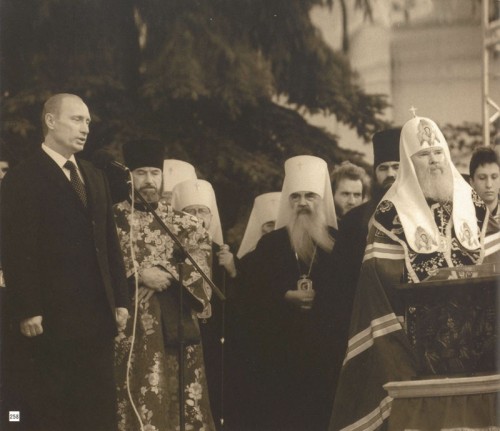
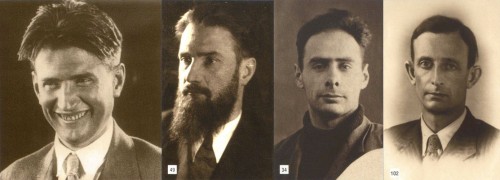
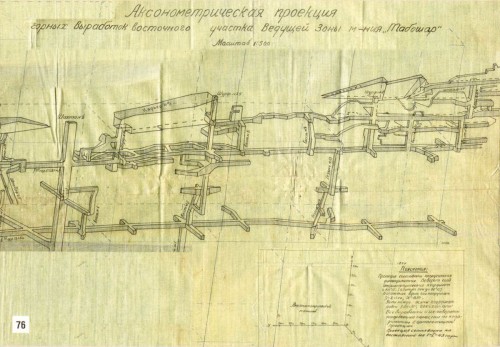
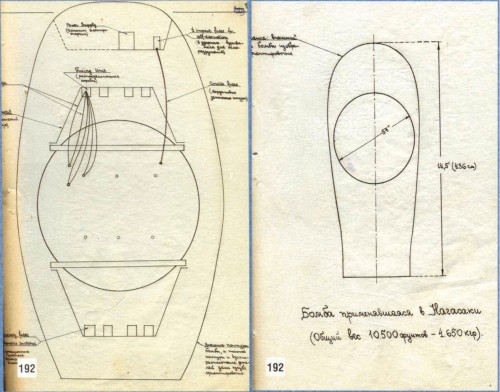
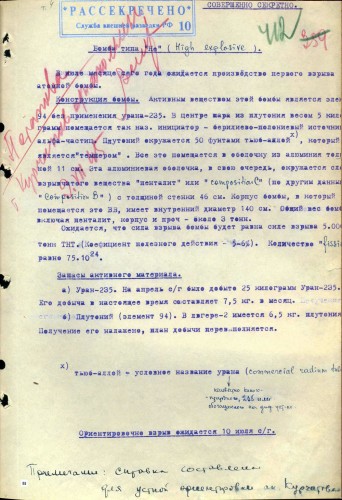
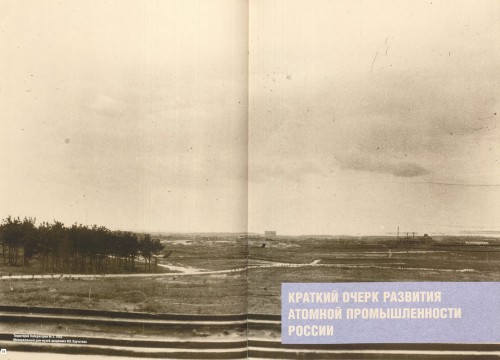
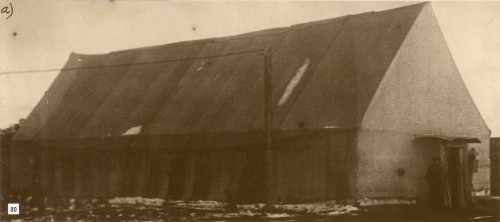
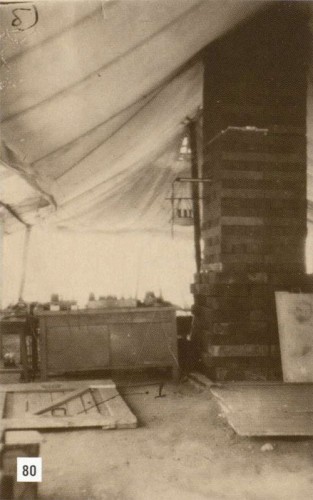
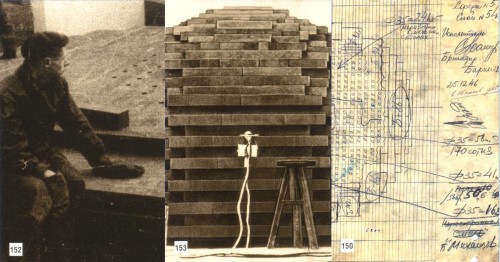
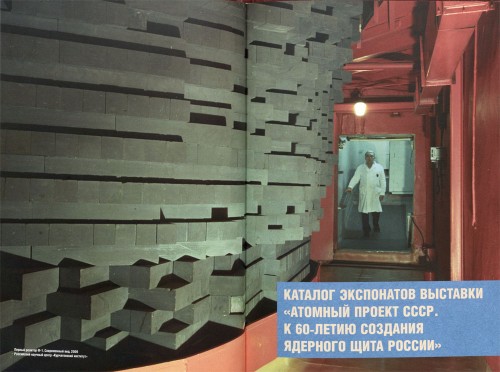
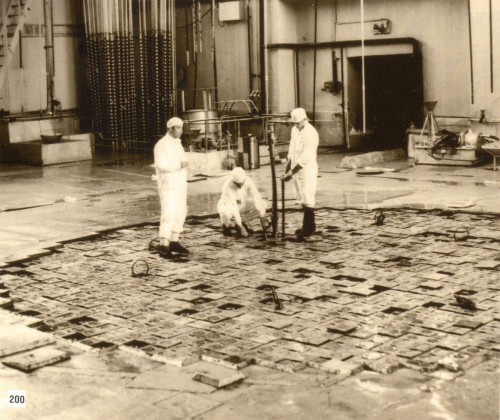
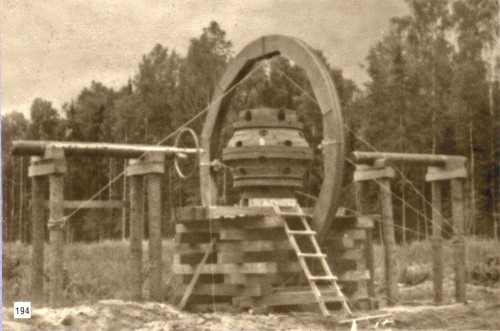
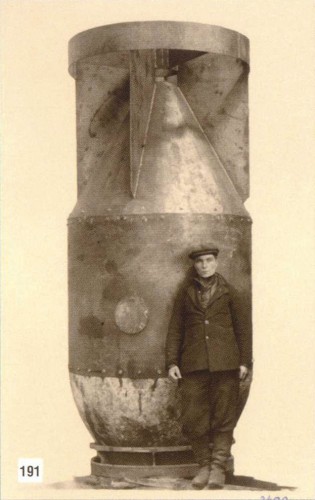

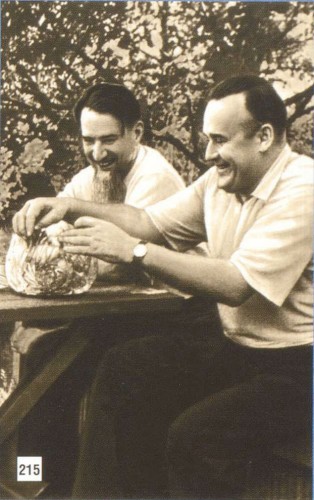
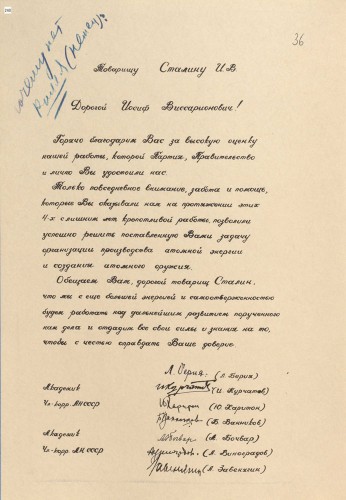
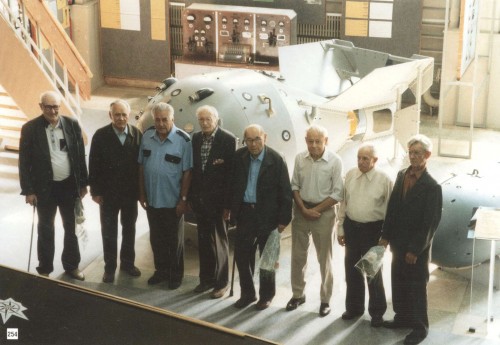


The Soviet Union and now Russia could/can produce some very nice books when they want to. I picked up some in Tallinn in the late 1990s and early 2000s, in several wonderful used bookstores. I guess they couldn’t pay the Old Town rents any more, because most of them are gone. There’s one on Harju that is kind of boutiquey and expensive, although they have some of the nice editions I paid a lot less for. What looks to me to be the last of the old-style bookstores is on Voorimehe, but its stock is much reduced. I’m not sure if the new Apollo bookstore, upstairs in the mall next to Sakala Center, has a back room with used books. When it was on Viru, it did. Stock and prices there would probably be similar to the boutiquey one on Harju.
I’m glad I picked up as many books as I did early on.
There is a great multi-language bookstore in Harvard Square that has a decent Russian section, but all of the books there are of the “printed on recycled newsprint” variety. Even the ones that try to do a bit better end up just putting all of their money into trying to make the cover attractive. But yes, I think the key term is “when they want to” — having Rosatom and lord knows who else behind this publication is probably what made this so wonderful.
You can’t really tell from my scan, but that front cover is a plastic, translucent overlay on top of the photo of the bomb. I mean, they really went all out!
Just curious: does the book say anything about Sillamäe (Силламяэ)? Beria started a plant there, after a pilot plant in Narva, to extract uranium from the local black shales. That effort failed, but the plant produced yellowcake until the mid-1980s, possibly even from ores from that mine in Tajikistan.
The plant was started in 1946.
The report to Beria from February 28, 1945 does not seem to be saying that the US bomb was using 6.5 kg of plutonium. At the beginning it states that the plutonium sphere in the bomb weighs 5 kg. The 6.5 kg figure at the bottom of the page refers to plutonium stocks in something they refer to as ‘Camp-2′ (lager’-2), if I interpret the typo correctly. Not sure what camp-2 stands for.
Which brings an interesting question. Have the amount of plutonium in Trinity or Fat Man been officially declassified in the US?
Ah, you are correct! It’s what I get for skimming. 5kg is still a pretty good estimate.
The general amount of plutonium in Fat Man/Trinity declassified in 2000: “The fact that the mass of plutonium in the Trinity test device and Fat Man was about 13.5 pounds (6 kilograms). (00-1)”
The exact amount (6.2 kg) has been ferreted out through various means by folks like Chuck Hansen and John Coster-Mullen.
Thank you! This is interesting. Does this mean that the Soviet intelligence was off by 1.2 kg? Otherwise it sounds like they did not always earn their pay after all…
What’s interesting is that document is dated the same day (February 28, 1945) that a big meeting was held at Los Alamos to finalize the Trinity bomb design. If the information came from before that meeting, it might have just been someone’s (Fuchs, Hall’s, whomever) approximation. If after, then it would be off by 1.2kg. The fact that the document mentions Composition C might indicate that it was from before the meeting — at the meeting, it was finalized that the lenses would be only made of Composition B and Baratol. (It seems to be saying that “other sources” suggest Comp. B rather than Comp. C, which is interesting. So I guess it’s a merging of multiple accounts…)
I wonder if the US actually knew, at that point, what the final size of the core was going to be; I’m not sure the design had been completely frozen at that time. But 5 kg is not a bad approximation. It also seems to estimate the final yield will be 5 kilotons, which is off, but not any more off than the estimates of some of the American experts at the time.
“Camp-2” may be some kind of code for Hanford. I’m not sure if they’d accumulated that much plutonium at Los Alamos, yet. Somewhere this sort of thing has been recorded, though, I am sure…
Thanks very much — this is really very interesting for anyone with interest in Soviet/Russian nuclear history. One point about the word “polygon” — it’s actually not a code name, it’s the word in Russian that refers to any kind of weapons testing range.
Interesting, thanks!
That’s true. And in fact, ‘polygon’ has more broad meaning than just ‘weapons testing range’ – it’s a (rather big physical) place to test anything.
Now we have proof. Kurchatov and Korolev also managed to steal the secret of — Jiffypop!
[…] Here’s a fascinating series of photographs from a book on the Soviet bomb program. Someday, I would love to see a big coffee table book of […]
The big circle is obviously the Russian Stargate, which they were apparently attempting to power using nuclear energy, in a program very similar to what the Americans were doing at the time.
Regarding the uranium code name — wasn’t “Tube Alloys” the original British code name for their 1940 atomic bomb programme? Did the Manhattan Project take it over, or was this because many of the Soviet spies got in through the British programme?
“Tube Alloys” was one of the British code names. It also got used for a number of other purposes, though — “tuballoy” was the code name for unenriched uranium at Oak Ridge, for example.
The Manhattan Project didn’t really take it over, per se; it’s more like the British threw in their lot with the Manhattan Project. The British project still maintained a lot of autonomy and continued doing some of its own work, even though they were collaborating. The World War II US-UK atomic relationship went through a number of different phases of collaboration/non-collaboration, and the UK was always pretty fierce about the fact that it was trying to keep an independent foot in the game, in anticipation of the importance of nuclear technology in the postwar period.
Alex,
There used to be a bookstore for Russian books in Rockville. They may have moved to Kensington., Here is a Website
http://www.russia-on-line.com/bookstore.html
Worth a call. Maybe they have a copy of the book.
These are amazing pictures and really put faces on the Cold War weapons rivalry. I am about to publish the oral history Joan Bainbridge Safford recorded for Columbia University in 1960 of my father, Charles Coryell, about his work on the Manhattan Project at Chicago and Oak Ridge, titled: A Chemist’s Role at the Birth of Atomic Energy. Her father administered the Trinity Test site.
It is edifying–and difficult–to research the situation of the enemy. Look into Rory Stewart’s review of Diana Preston’s book, The Dark Defile: Britain’s Catastrophic Invasion of Afghanistan, 1838-1842 in the New York Review of Books, August 16, 2012.
Julie: thanks! I actually have a short post that involves Kenneth Bainbridge that I’ll be putting up probably next week or the week after. I appreciate the Review of Books reference and will give it a read.
If you’d like a picture of Stalin’s relationship with his scientists and engineers, read, The Ghost of the Executed Engineer. It’s a fascinating look at the Soviet Union’s extermination of technical workers.
Everything Loren Graham has done is wonderful. He’s an amazing guy — basically the first serious historian of Russian and Soviet science. I know him a bit from when I was at Harvard; he told some wild stories about the KGB trying to ensnare him, back in the day.
[…] pertain to the Soviet side of the Bohr-Terletsky interview. The one that I have scanned comes from the same Russian nuclear history book I discussed last week, though the copy in the book is incomplete. I have managed to scrounge up […]
Here’s an answer to the question about what Korolev and Kurchatov (and also Keldysh) have on the table, it seems to be a bowl of fruit 🙂
http://www.ras.ru/keldysh/e516847d-6647-43cb-87b0-9edc7b56ac5d.aspx#
The reference for the picture is: М.В. Келдыш. Творческий портрет по воспоминаниям современников. М.: Наука, 2002. С.74.
[…] Rare Photos of the Soviet Bomb Project (7/27/2012) – 13,400 pageviews […]
[…] people working at Rosatom, the Russian state nuclear agency/corporation, have been publishing impressive amounts of raw historical documents information about the Soviet bomb project, as part of their on-going […]
You surely know this, but for more on Nickolaus Riehl see his book Zehn Jahre im goldenen Käfig, translated by Frederick Seitz and published as Stalin’s captive: Nikolaus Riehl and the Soviet race for the bomb (American Chemical Society, 1996).
The big wooden ring in the photograph looks suspiciously the same size as a B-29 fuselage. The Soviets were already reverse-engineering and copying three interned U.S. B-29’s captured from bombing raids on Japan to create the Tupolev Tu-4, an exact copy. This is probably some indication of positioning of the bomb within the bomb bay fuselage, and the two horizontal wooden poles are probably indicative of the two B-29 bomb bay lengths.
That is very observant, and I think you might be on to something! Here’s a picture of the Fat Man’s fit inside the B-29 (taken from John Coster-Mullen’s Atomic Bombs), and it’s a pretty close match both in terms of appearance, positioning, and relative dimensions.
I visited the Semipalatinsk Test Site in September 2013. Here are some photos along with documentation that I found in various places:
http://www.flickr.com/photos/martintrolle/sets/72157638122387574/